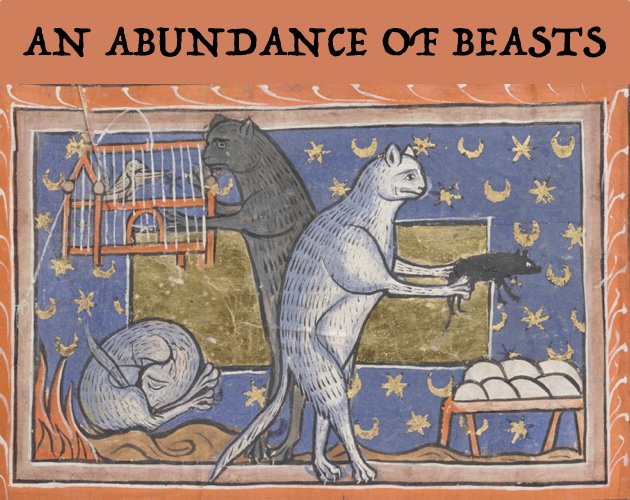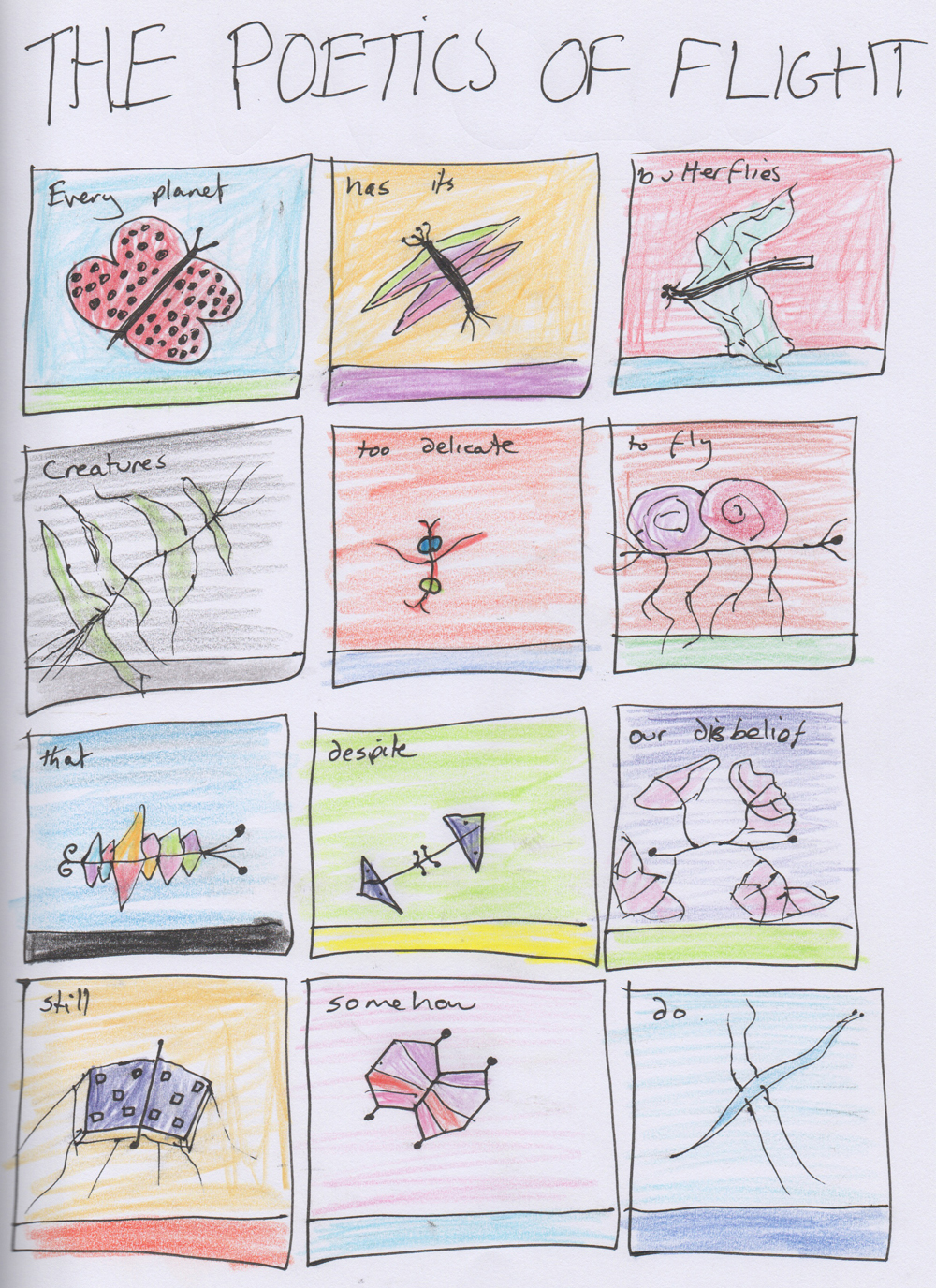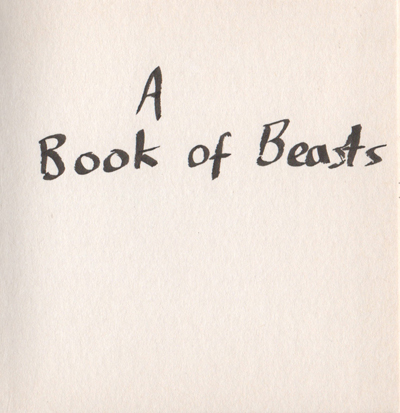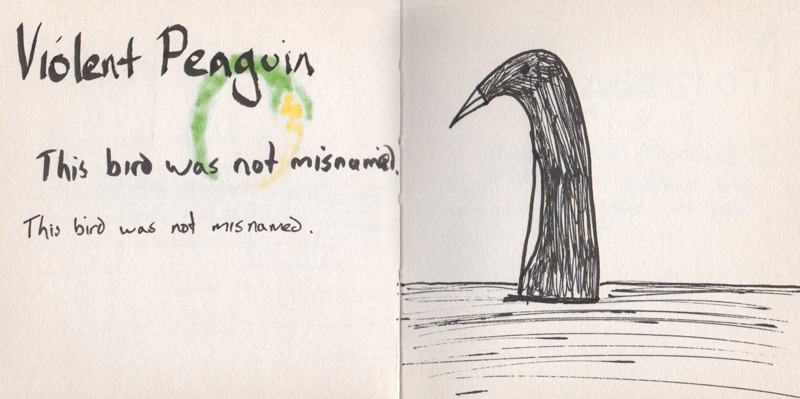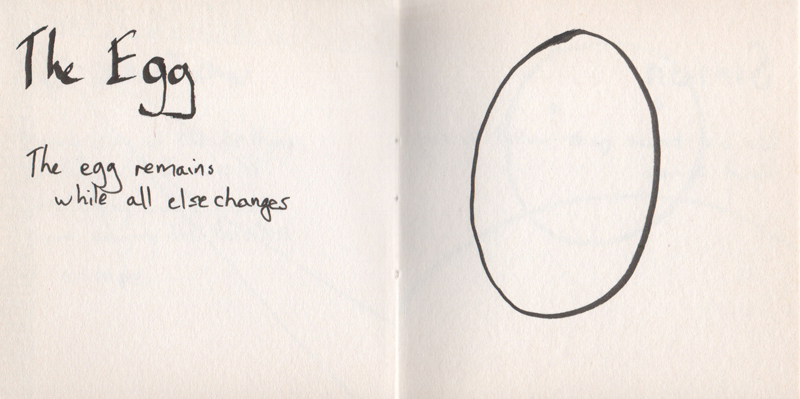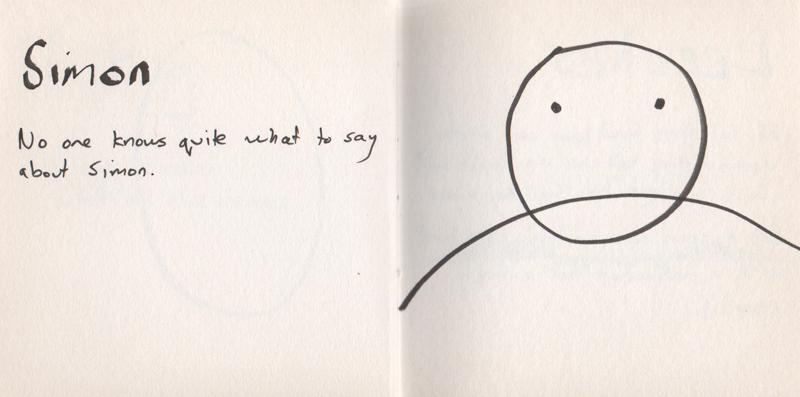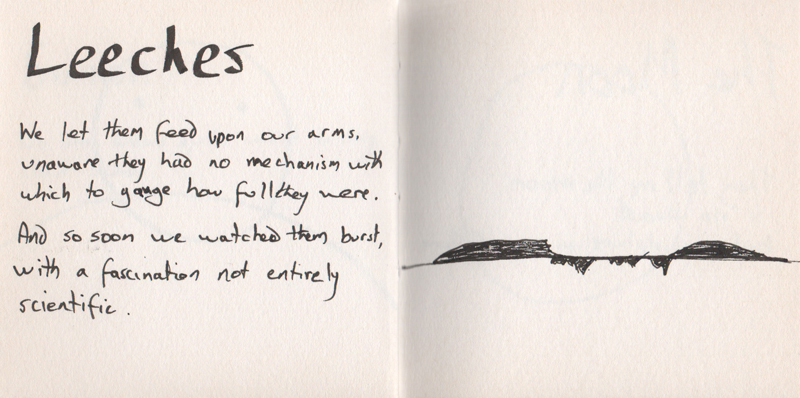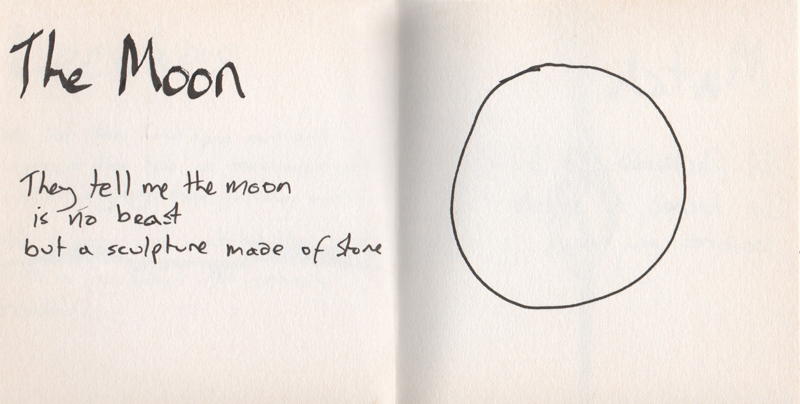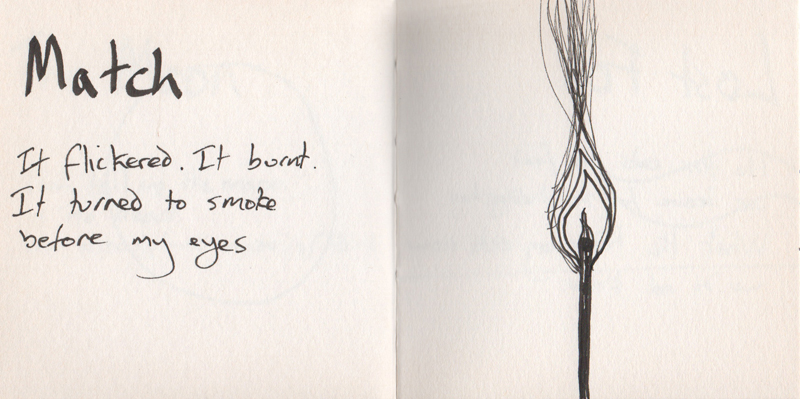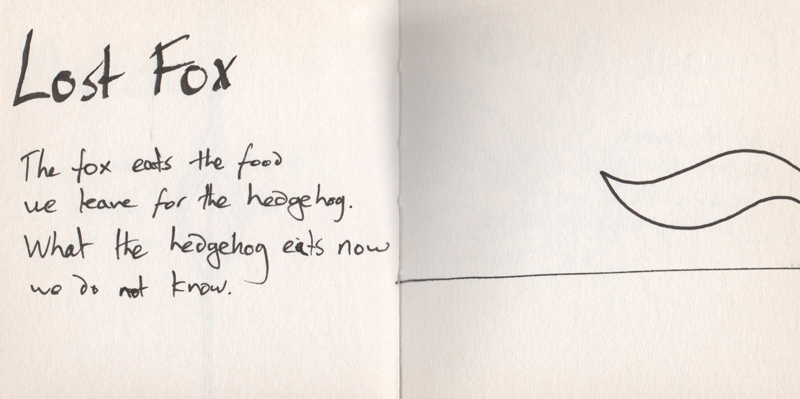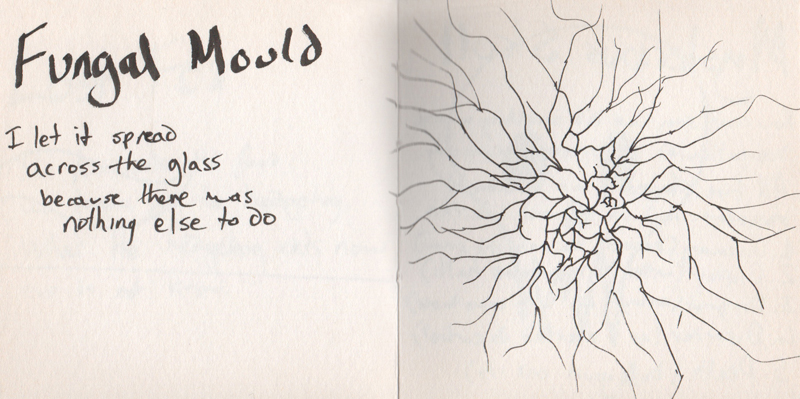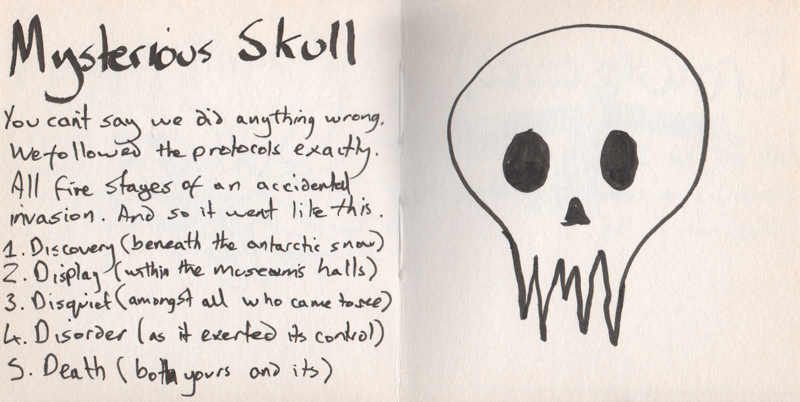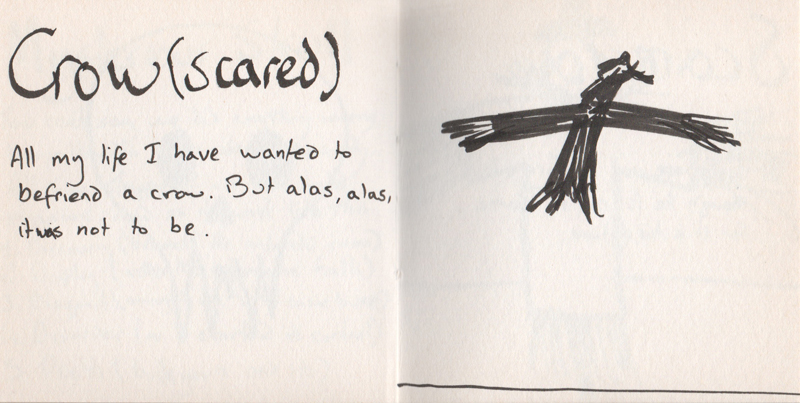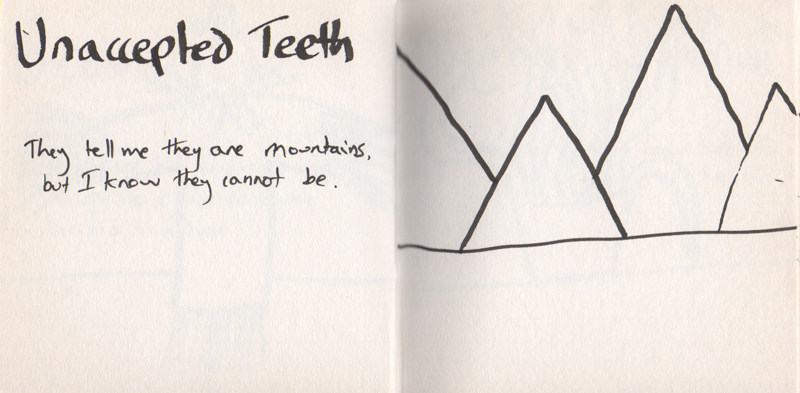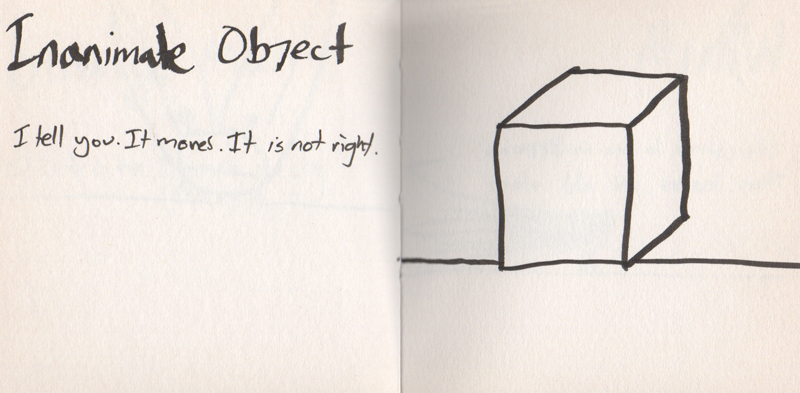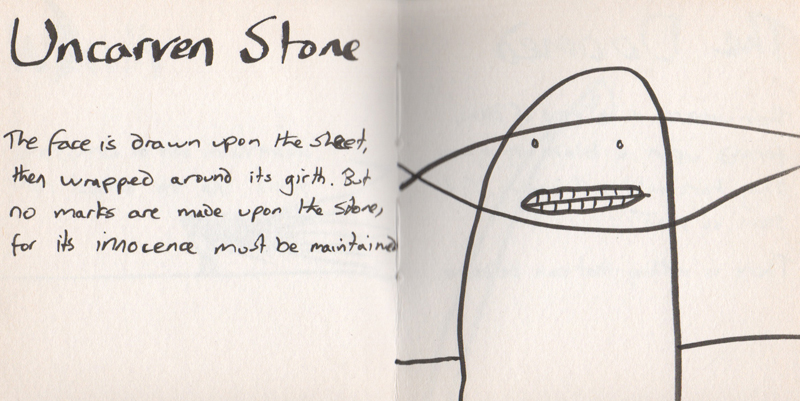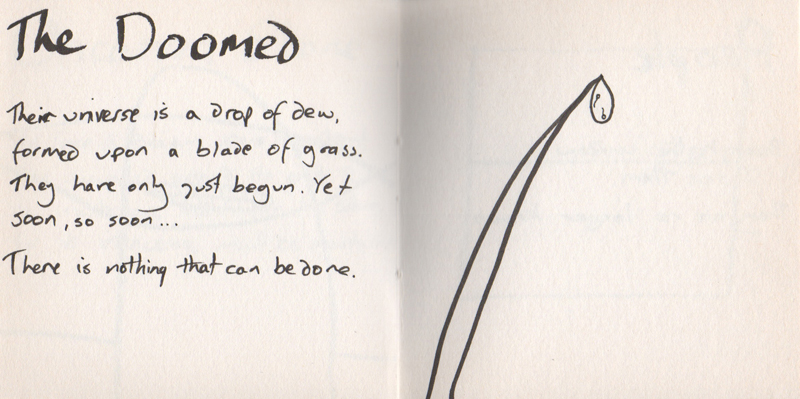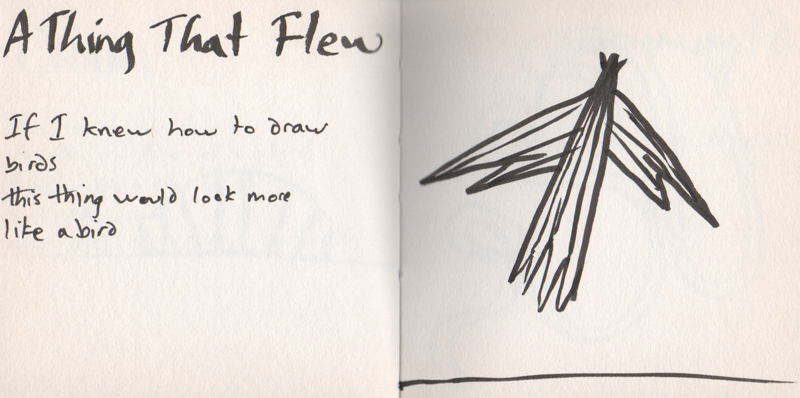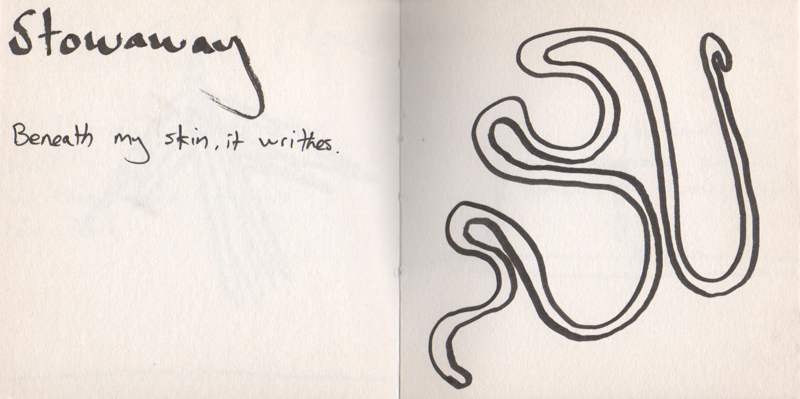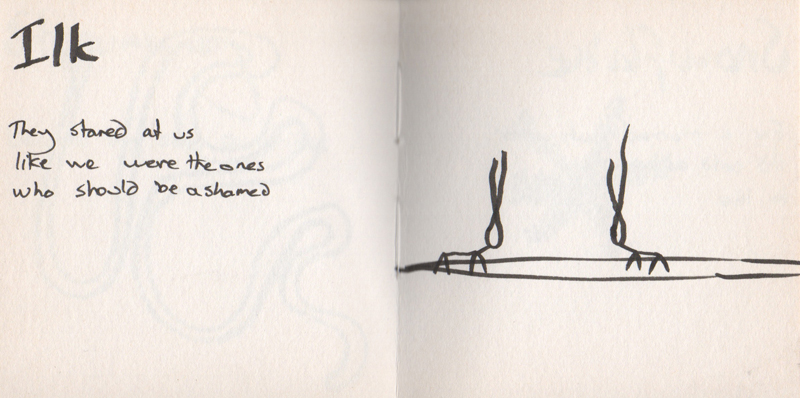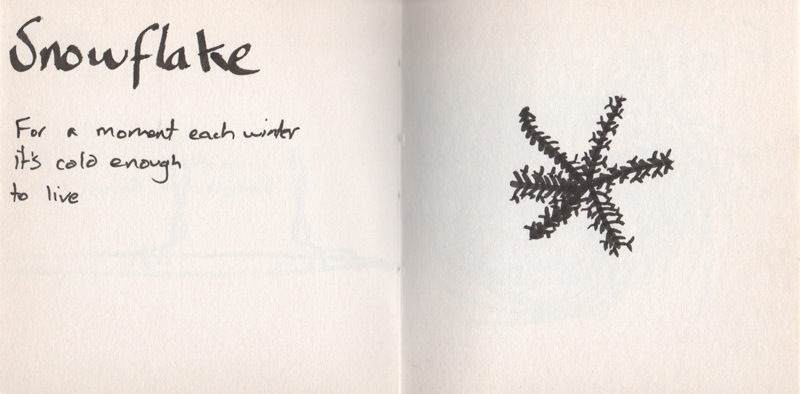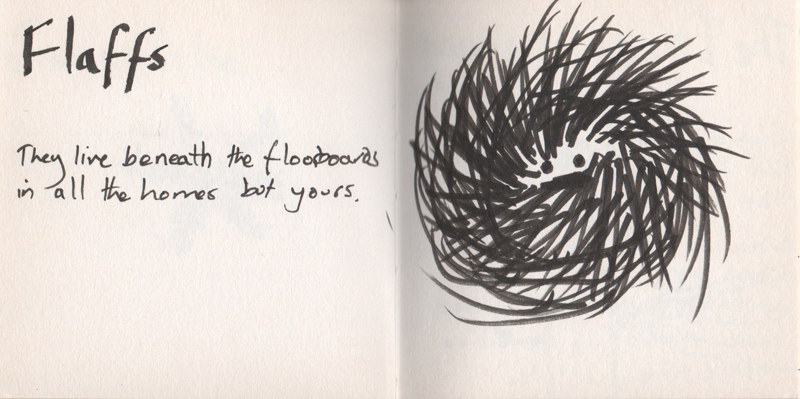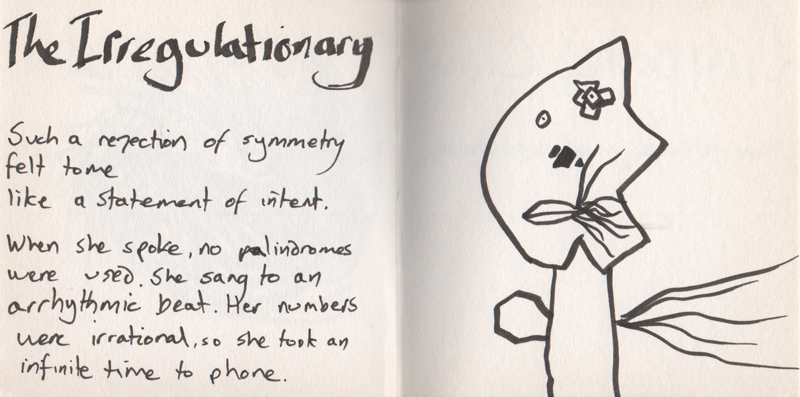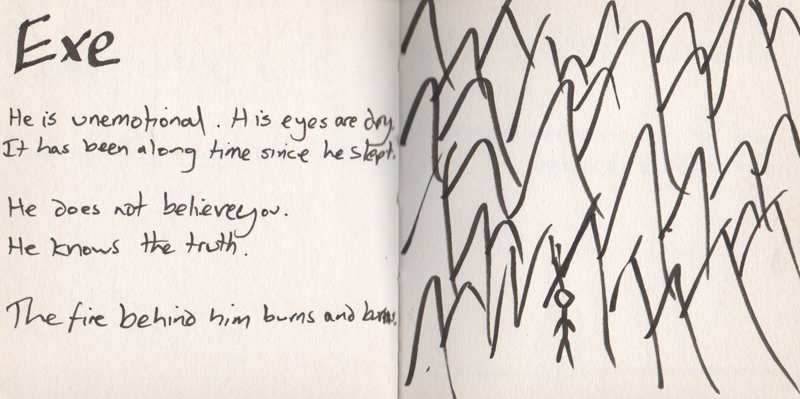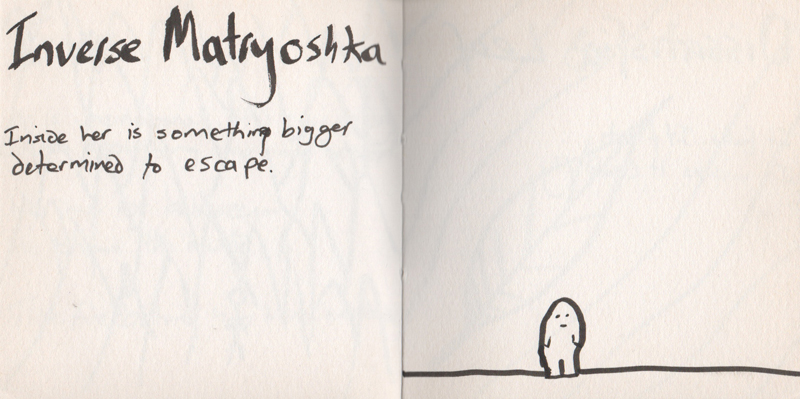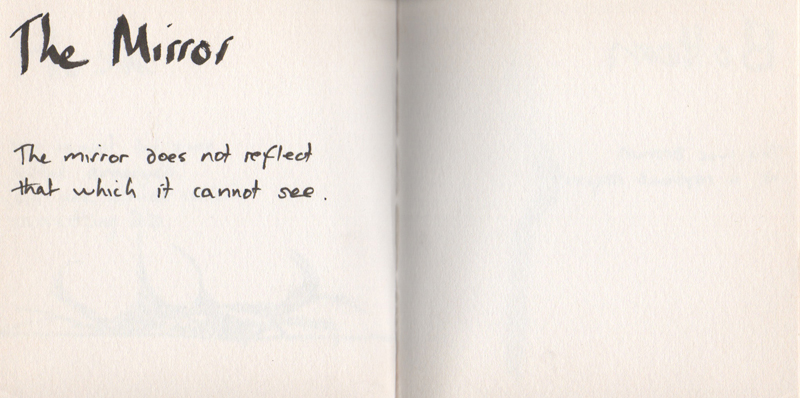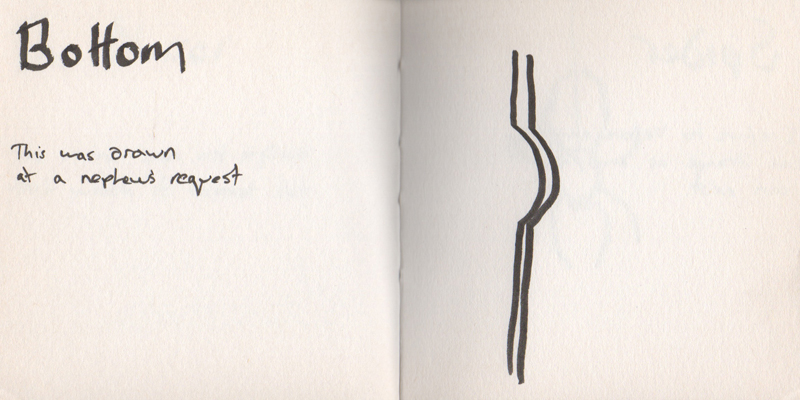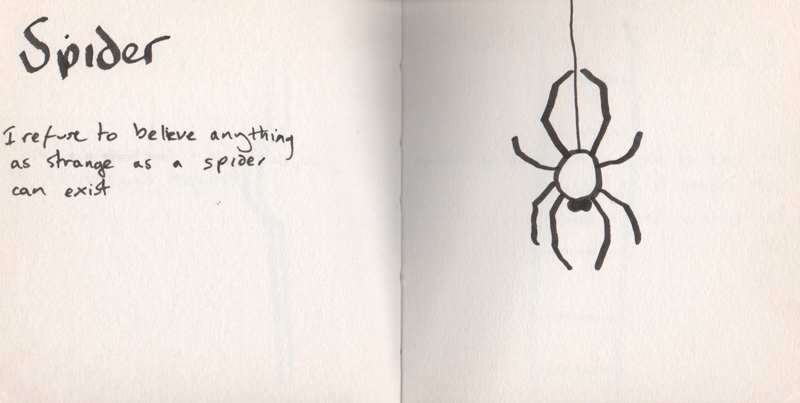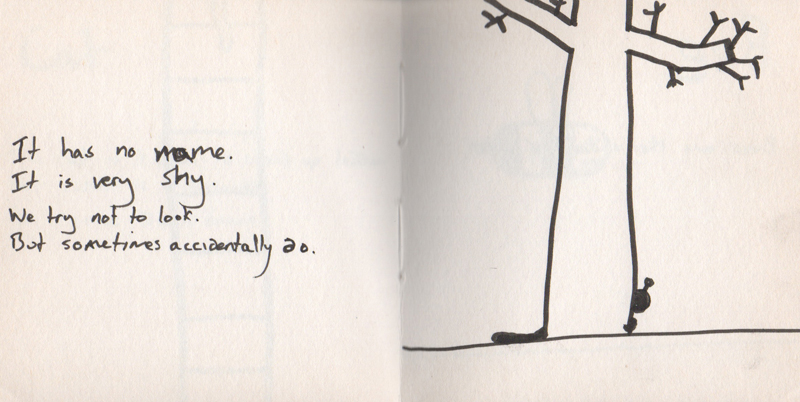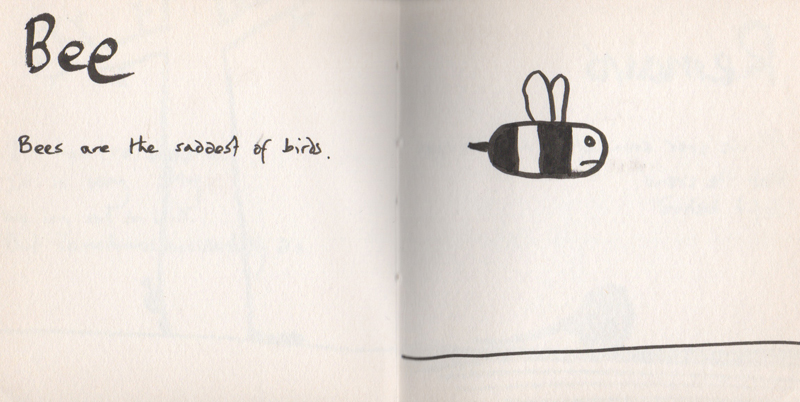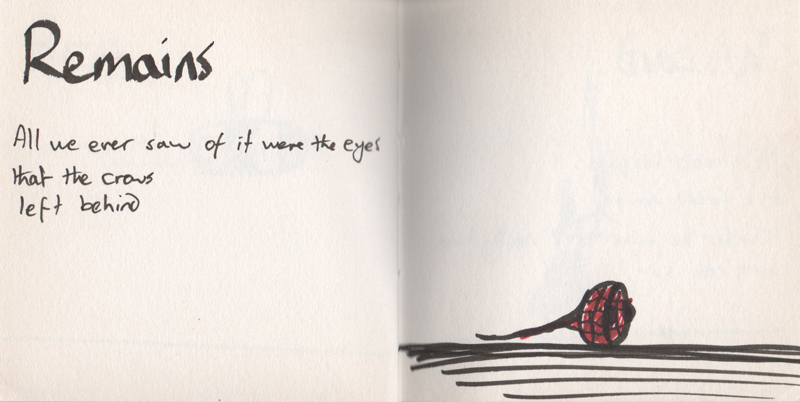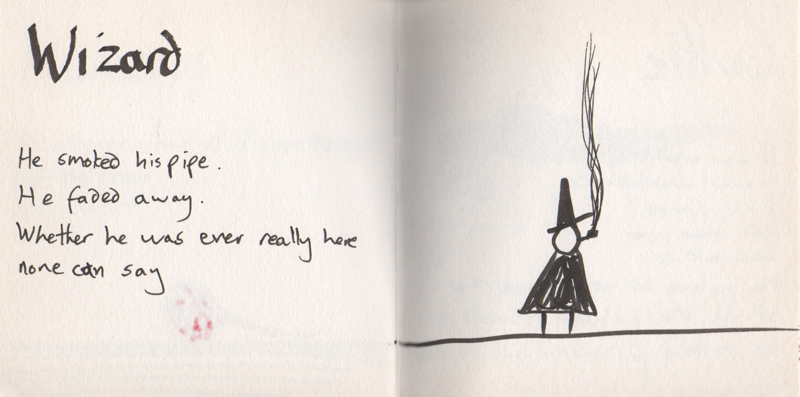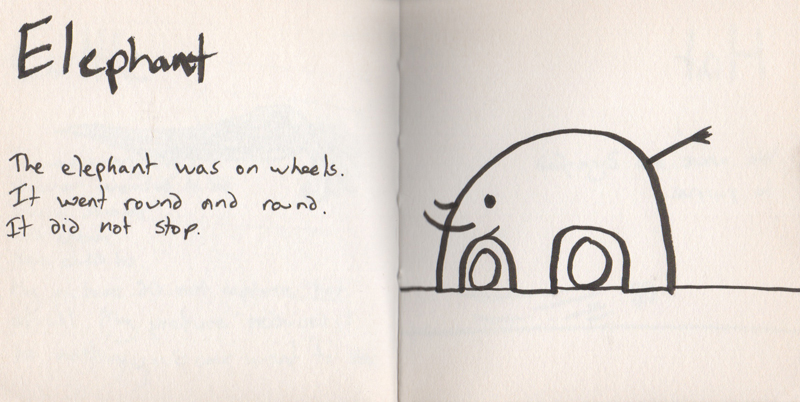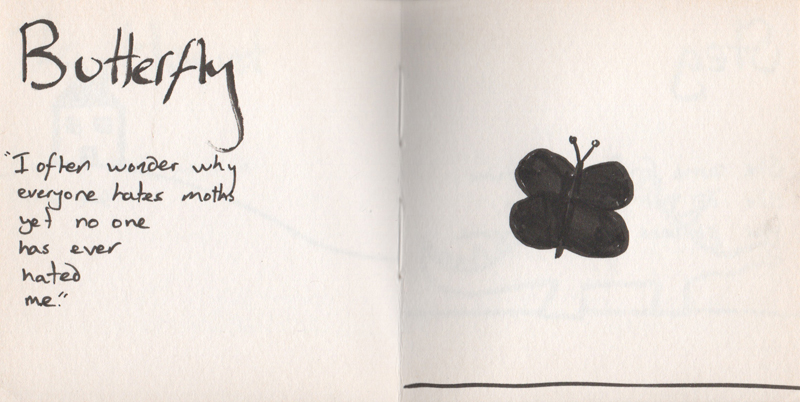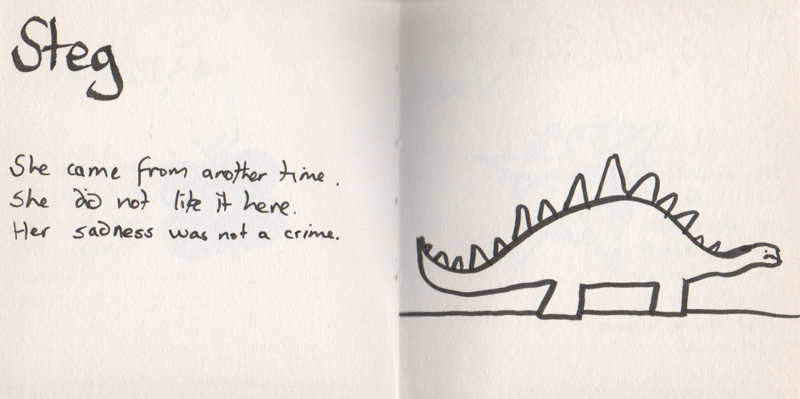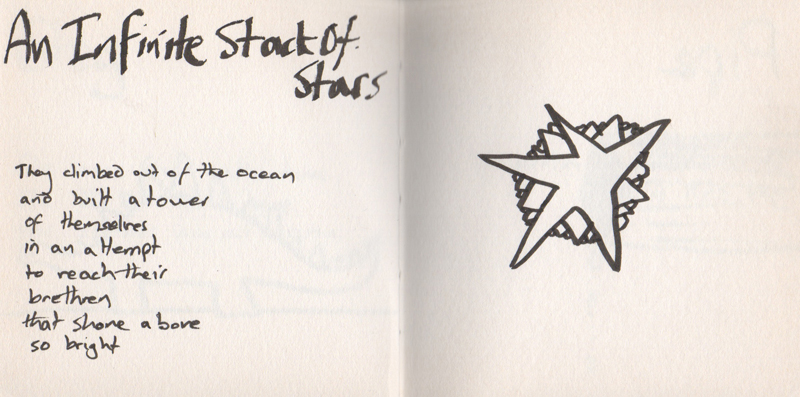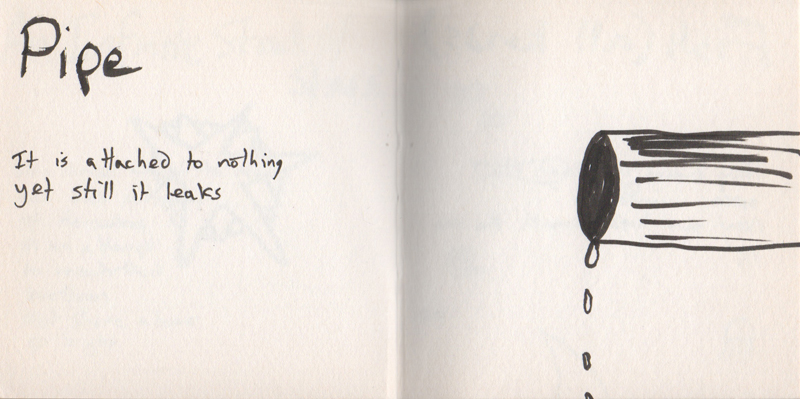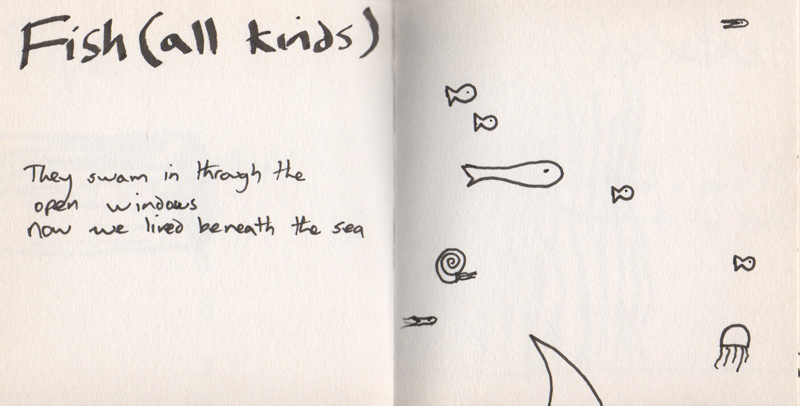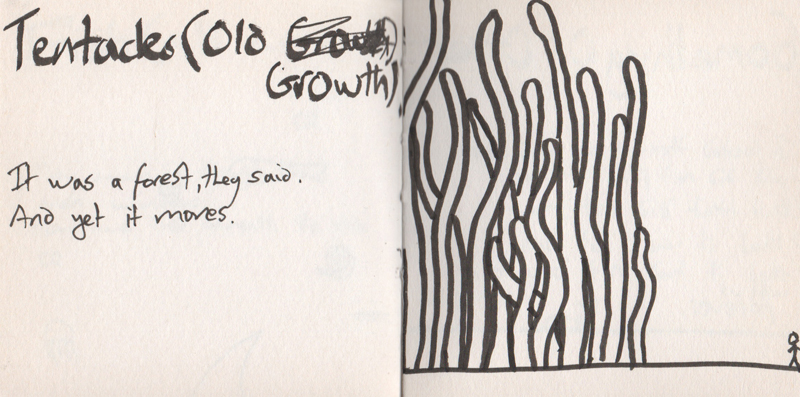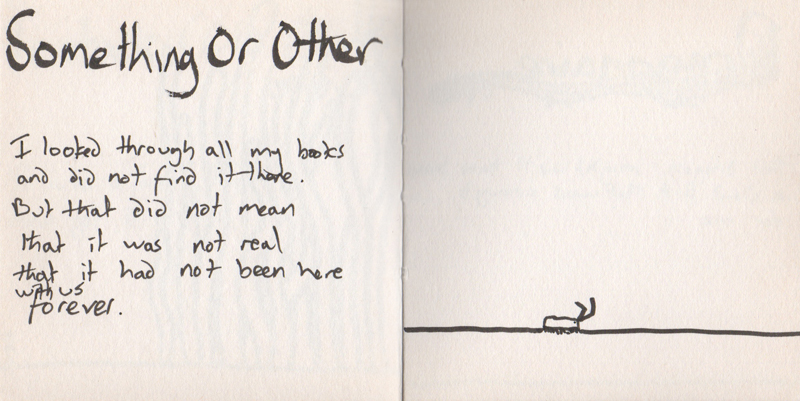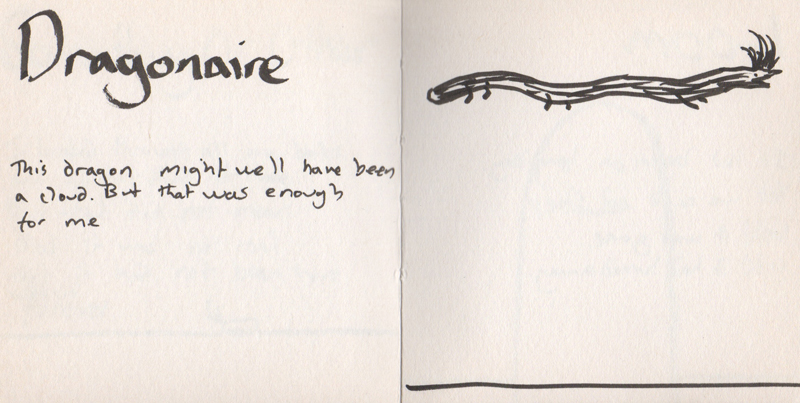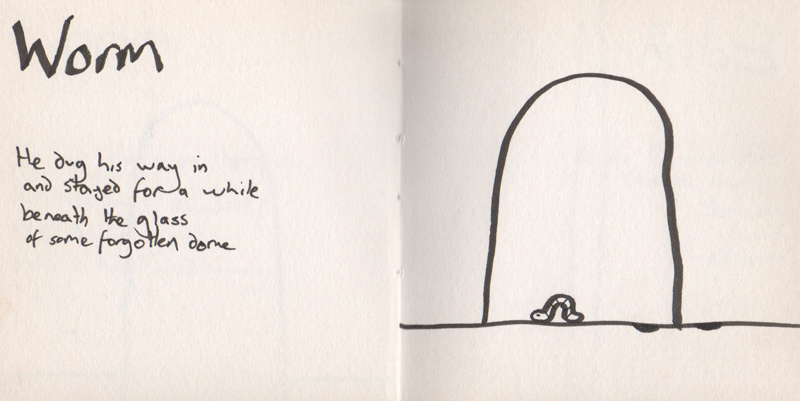The World
Plato thought the World to be a living being and in the Laws stated that the planets and stars were living as well. Others have it that the earth has its foundation on the water; the water, on the crag, the crag on the bull’s forehead; the bull, on a bed of sand; the sand on the World; the World, on a stifling wind; the stifling wind on a mist. Leonardo da Vinci had it that the World fed on fire and in this way renewed its skin. In another version of the myth, the World, burning red-hot, would put its arms around a man and kill him.
What lies under the mist is unknown.
[Assembled from the following Imaginary Beings: Animals In The Form Of Spheres; Bahamut; The Salamander; Talos]
Heaven
Down the ages, Heaven (also known as Hell) grows increasingly ugly and horrendous until today it is forgotten.
Four centuries before the Christian era, Heaven was a magnification of the elephant or of the hippopotamus, or a mistaken and alarmist version of these animals. In India Heaven is a domestic animal. During the Renaissance, the idea of Heaven as an animal reappeared in Lucilio Vanini. In sixteenth-century South America, the name was given by the Spanish Conquistadors to a mysterious animal – mysterious because nobody ever saw it well enough to know whether it was a bird or a mammal, whether it had feathers or fur. In the story ‘William Wilson’ by Poe, Heaven is the hero’s conscience.
Heaven, in Greek, means ‘that which looks downward’. ‘A vain or foolish fancy’ is the definition of Heaven that we now find in dictionaries.
[Assembled from the following Imaginary Beings: The Basilisk; Behemoth; The Elephant That Foretold The Birth Of Buddha; Animals In The Form Of Spheres; The Carbuncle; The Double; The Catoblepas; The Chimera]
The Mirror
We do not know what the Mirror looks like. So immense and dazzling is it that the eyes of man cannot bear its sight.
Sir Thomas Browne gives this description of it in his Pseudodoxia Epidemica (1646):
“The Mirror has the ability to assume many shapes, but these are inscrutable. Often for months on end it is not to be seen; then it has presumably moved into other houses; but it always comes faithfully back to our house again. Its beauty delights the other animals, which would all flock to it were it not for the Mirror’s terrible stare.”
Both Brahmanism and Buddhism offer hells full of Mirrors, which, like Dante’s Cerberus, are torturers of souls. This same story is told in the Arabian Nights, in St. Brendan’s legend, and in Milton’s Paradise Lost, which shows us the Mirror ‘slumbering on the Norway foam’.
In those days the world of mirrors and the world of men were not, as they are now, cut off from each other. Chuang Tzu tells us of a determined man who at the end of three thankless years mastered the art of slaying Mirrors, and for the rest of his days was not given a single chance to put his art into practice.
It is long now indeed since I dreamed that I saw the Mirror.
[Assembled from the following Imaginary Beings: The Unicorn Of China; Bahamut; The Barometz; The Eastern Dragon; The Odradek; The Panther; Cerberus; Fastitocalon; Fauna Of Mirrors; The Chinese Dragon; The Chinese Phoenix]
The Half
Suggested or stimulated by reflections in mirrors and in water and by twins, the idea of the Double is common to many countries. But among the monstrous creatures of the Temptation is the Half, which ‘has only one eye, one cheek, one hand, one leg, half a torso and half a heart’. It is also said that it can see with its whole body and that to the touch it is like the skin of a peach. Also that if it is chopped in half, its two parts will join again.
According to the Greeks and Romans, Halves lived in Africa. Pliny (VII, 3) says he saw a Half embalmed in honey that had been brought to Rome from Egypt in the reign of Claudius. This outdoes even the boldest, most imaginative piece of fiction.
[Assembled from the following Imaginary Beings: The Double; The Nasnas; A Bao A Qu; The Amphisbaena; The Lamias; The Centaur; The Zaratan]
Women
Paracelsus limited their dominion to water, but the ancients thought the world was full of Women. Little is known about what they looked like, except that they were tiny and sinister. Many authorities thought of them as witches; others as evil monsters. The Chinese paint them on their dishes in order to warn against self-indulgence.
Yet in the ballad of Athis, we read:
“Earthly things are but emblems of heavenly things. And we wonder at their song.”
[Assembled from the following Imaginary Beings: The Nymphs; The Elves; The Lamias; The T’ao T’iehThe Western Dragon; Swedenborg’s Angels; An Animal Imagined By CS Lewis]
__________
Notes:
1. I assembled these during December 2021
2. From The Book Of Imaginary Beings by Jorge Luis Borges
3. For other similar cut up experiments to these, please see In The Terminals OF Minraud (a William Burroughs cut up trilogy), The New Brothers Grimm, and Five Tributes To The Works Of Daniil Kharms
__________
If you like the things you've read here please consider subscribing to my patreon or my ko-fi. Patreon subscribers get not just early access to content and also the occasional gift, but also my eternal gratitude. Which I'm not sure is very useful, but is certainly very real.(Ko-fi contributors probably only get the gratitude I'm afraid, but please get in touch if you want more). Thank you!
